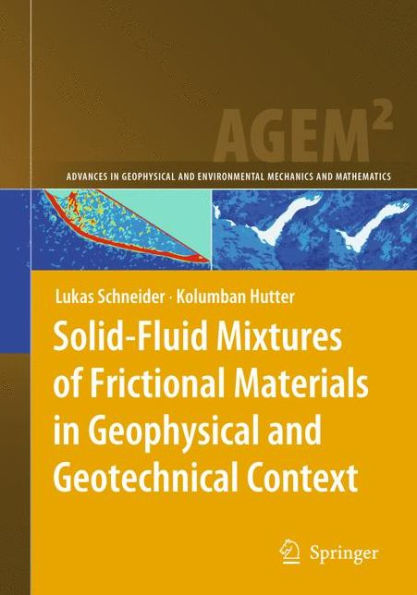Home
Solid-Fluid Mixtures of Frictional Materials in Geophysical and Geotechnical Context: Based on a Concise Thermodynamic Analysis
Barnes and Noble
Solid-Fluid Mixtures of Frictional Materials in Geophysical and Geotechnical Context: Based on a Concise Thermodynamic Analysis
Current price: $109.99


Barnes and Noble
Solid-Fluid Mixtures of Frictional Materials in Geophysical and Geotechnical Context: Based on a Concise Thermodynamic Analysis
Current price: $109.99
Size: OS
Loading Inventory...
*Product information may vary - to confirm product availability, pricing, shipping and return information please contact Barnes and Noble
Mixture concepts are nowadays used in a great number of subjects of the - ological, chemical, engineering, natural and physical sciences (to name these alphabetically) and the theory of mixtures has attained in all these dis- plines a high level of expertise and specialisation. The digression in their development has on occasion led to differences in the denotation of special formulations as ‘multi-phase systems’ or ‘non-classical mixtures’, ‘structured mixtures’, etc. , and their representatives or defenders often emphasise the differences of these rather than their common properties. This mono graphis an attempt to view theoretical formulations of processes which take place as interactions among various substances that are spatially intermixed and can be viewed continuously fill the space which they occupy as mixtures. Moreover, we shall assume that the processes can be regarded to becharacterised by variables which obey a certain degree of continuity in their evolution, so that the relevant processes can be described mathematically by balance laws, in global or local form, eventually leading to differential and/or integral equations, to which the usual techniques of theoretical and numerical analysis can be applied. Mixtures are generally called non-classical, if, apart from the physical laws (e. g. balances of mass, momenta, energy and entropy), also further laws are postulated, which are less fundamental, but may describe some features of the micro-structure on the macroscopic level. In a mixture of fluids and solids – these are sometimes called particle laden systems– the fraction of the volume that is occupied by each constituent is a significant characterisation of the micro-structure that exerts some influence on the macro-level at which the equations governing the processes are formulated. Forsolid-fluid mixtures at high solids fraction where particle contact is essential, friction between the particles gives rise to internal stresses, which turn out to be best described by an internal symmetric tensor valued variable.






